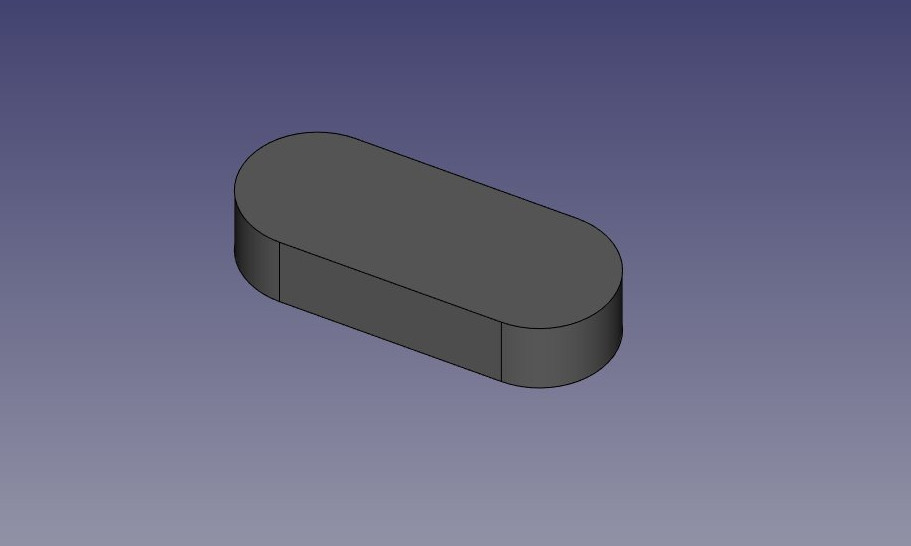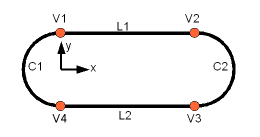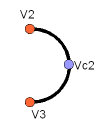Manuale:Creare e manipolare la geometria
- Introduzione
- Scoprire FreeCAD
- Lavorare con FreeCAD
- Script Python
- La Comunità
Nei capitoli precedenti, abbiamo imparato a conoscere i diversi ambienti di FreeCAD, e che ciascuno di essi implementa i suoi propri strumenti e tipi di geometria. Gli stessi concetti si applicano quando si lavora con il codice Python.
Abbiamo anche visto che la grande maggioranza degli ambienti di FreeCAD dipendono da uno fondamentale: l'ambiente Part. Infatti, molti altri ambienti di lavoro, come ad esempio Draft o Arch, fanno esattamente quello che faremo in questo capitolo: usano del codice Python per creare e manipolare della geometria Part.
Quindi la prima cosa da fare per lavorare con la geometria Part, è di fare l'equivalente in Python passando all'ambiente Parte: importare il modulo Parte:
import Part
Dedicare un minuto per esplorare il contenuto del modulo parte, digitando Part. e navigare attraverso i diversi metodi proposti. Il modulo Parte offre diversi funzioni di convenienza, come makeBox, makeCircle, ecc ... che costruiscono immediatamente un oggetto. Provare questo, come esempio:
Part.makeBox(3,5,7)
Quando si preme Invio dopo aver digitato la linea precedente, nella vista 3D non appare nulla, ma nella console di Python viene stampato qualcosa di simile:
<Solid object at 0x5f43600>
Questo è dove avviene un concetto importante. Quello che abbiamo creato qui è una forma parte, una Part Shape. Non si tratta ancora di un document object di FreeCAD. In FreeCAD, gli oggetti e loro geometria sono indipendenti. Pensiamo a un document object di FreeCAD come un contenitore, destinato a ospitare una forma. Gli oggetti parametrici hanno anche delle proprietà, come lunghezza e larghezza, e la loro forma viene ricalcolata al-volo, ogni volta che cambia una delle proprietà. Quì abbiamo calcolato una forma manualmente.
We can now easily create a "generic" document object in the current document (make sure you have at least one new document open), and give it a box shape like we just made:
boxShape = Part.makeBox(3,5,7)
myObj = FreeCAD.ActiveDocument.addObject("Part::Feature","MyNewBox")
myObj.Shape = boxShape
FreeCAD.ActiveDocument.recompute()
Note how we handled myObj.Shape , see that it is done exactly like we did in the previous chapter, when we changed other properties of an object, such as box.Height = 5 . In fact, Shape is also a property, just like Height. Only it takes a Part Shape, not a number. In next chapter we will have a deeper look at how those parametric objects are constructed.
For now, let's explore our Part Shapes more in detail. At the end of the chapter about [Manual:Traditional modeling, the CSG way|traditional modeling with the Part Workbench] we showed a table that explains how Part Shapes are constructed, and their different components (Vertices, edges, faces, etc). The exact same components exist here and can be retrieved from Python. All Part Shape always have the following attributes:Vertexes, Edges, Wires, Faces, Shells and Solids. All of them are lists, that can contain any number of elements or be empty:
print(boxShape.Vertexes) print(boxShape.Edges) print(boxShape.Wires) print(boxShape.Faces) print(boxShape.Shells) print(boxShape.Solids)
For example, let's find the area of each face of our box shape above:
for f in boxShape.Faces: print(f.Area)
Or, for each edge, its start point and end point:
for e in boxShape.Edges:
print("New edge")
print("Start point:")
print(e.Vertexes[0].Point)
print("End point:")
print(e.Vertexes[1].Point)
As you see, if our boxShape has a "Vertexes" attribute, each Edge of the boxShape also has a "Vertexes" attribute. As we can expect, the boxShape will have 8 vertices, while the edge will only have 2, which are both part of the list of 8.
We can always check what is the type of a shape:
print(boxShape.ShapeType) print(boxShape.Faces[0].ShapeType) print (boxShape.Vertexes[2].ShapeType)
So to resume the whole diagram of Part Shapes: Everything starts with Vertices. With one or two vertices, you form an Edge (full circles have only one vertex). With one or more Edges, you form a Wire. With one or more closed Wires, you form a Face (the additional Wires become "holes" in the Face). With one or more Faces, you form a Shell. When a Shell is fully closed (watertight), you can form a Solid from it. And finally, you can join any number of Shapes of any types together, which is then called a Compound.
We can now try creating complex shapes from scratch, by constructing all their components one by one. For example, let's try to create a volume like this:
We will start by creating a planar shape like this:
First, let's create the four base points:
V1 = FreeCAD.Vector(0,10,0) V2 = FreeCAD.Vector(30,10,0) V3 = FreeCAD.Vector(30,-10,0) V4 = FreeCAD.Vector(0,-10,0)
Then we can create the two linear segments:
L1 = Part.Line(V1,V2) L2 = Part.Line(V4,V3)
Note that we didn't need to create Vertices? We could immediately create Part.Lines from FreeCAD Vectors. This is because here we haven't created Edges yet. A Part.Line (as well as Part.Circle, Part.Arc, Part.Ellipse or Part.BSpline) does not create an Edge, but rather a base geometry on which an Edge will be created. Edges are always made from such a base geometry, which is stored its Curve attribute. So if you have an Edge, doing:
print(Edge.Curve)
will show you what kind of Edge this is, that is, if it is based on a line, an arc, etc... But let's come back to our exercise, and build the arc segments. For this, we will need a third point, so we can use the convenient Part.Arc, which takes 3 points:
VC1 = FreeCAD.Vector(-10,0,0) C1 = Part.Arc(V1,VC1,V4) VC2 = FreeCAD.Vector(40,0,0) C2 = Part.Arc(V2,VC2,V3)
Now we have 2 lines (L1 and L2) and 2 arcs (C1 and C2). We need to turn them into edges:
E1 = Part.Edge(L1) E2 = Part.Edge(L2) E3 = Part.Edge(C1) E4 = Part.Edge(C2)
Alternatively, base geometries also have a toShape() function that do exactly the same thing:
E1 = L1.toShape() E2 = L2.toShape() ...
Once we have a series of Edges, we can now form a Wire, by giving it a list of Edges. We don't need to take care of the order. OpenCasCade, the geometry "engine" of FreeCAD, is extraordinarily tolerant to unordered geometry. It will sort out what to do:
W = Part.Wire([E1,E2,E3,E4])
And we can check if our Wire was correctly understood, and that it is correclty closed:
print( W.isClosed() )
Which will print "True" or "False". In order to make a Face, we need closed Wires, so it is always a good idea to check that before creating the Face. Now we can create a Face, by giving it a single Wire (or a list of Wires if we had holes):
F = Part.Face(W)
Then we extrude it:
P = F.extrude(FreeCAD.Vector(0,0,10))
Note that P is already a Solid:
print(P.ShapeType)
Because when extruding a single Face, we always get a Solid. This wouldn't be the case, for example, if we had extruded the Wire instead:
S = W.extrude(FreeCAD.Vector(0,0,10)) print(s.ShapeType)
Which will of course give us a hollow shell, with the top and bottom faces missing.
Now that we have our final Shape, we are anxious to see it on screen! So let's create a generic object, and attribute it our new Solid:
myObj2 = FreeCAD.ActiveDocument.addObject("Part::Feature","My_Strange_Solid")
myObj2.Shape = P
FreeCAD.ActiveDocument.recompute()
Altenatively, the Part module also provides a shortcut that does the above operation quicker (but you cannot choose the name of the object):
Part.show(P)
All of the above, and much more, is explained in detail on the Part Scripting page, together with examples.
Read more:



